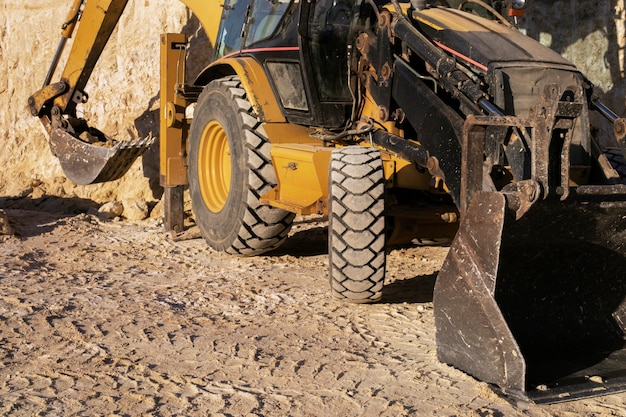When embarking on a construction or landscaping project, choosing the right materials is crucial for ensuring the success and longevity of the endeavor. Gravel and concrete are two common options with distinct characteristics and applications, each offering unique advantages and considerations. In this article, we compare gravel and concrete to help you determine which is better suited for your specific project requirements.
Understanding Gravel
Gravel is a granular aggregate composed of rock fragments, ranging in size from granules to boulders. It is often sourced from natural deposits and comes in various types, including crushed stone, pea gravel, and river rock. Gravel is prized for its versatility, affordability, and ease of installation, making it a popular choice for a wide range of construction and landscaping projects.
Advantages of Gravel
- Permeability: Gravel is highly permeable, allowing water to drain through the surface and infiltrate the soil below. This property makes it ideal for constructing drainage systems, road bases, and French drains, helping prevent water buildup and erosion.
- Flexibility: Gravel can conform to uneven terrain and accommodate shifting ground conditions, making it suitable for projects where flexibility is desired, such as driveways, pathways, and garden beds.
- Cost-Effectiveness: Gravel is generally more affordable than concrete, making it an economical choice for large-scale projects or areas with extensive coverage requirements.
- Aesthetic Appeal: Gravel comes in a variety of colors and textures, allowing for creative and customizable design options. It can add rustic charm to gardens, pathways, and outdoor living spaces, enhancing the visual appeal of the landscape.
Exploring Concrete
Concrete is a composite material composed of cement, aggregates (such as gravel or crushed stone), water, and chemical admixtures. It is renowned for its strength, durability, and versatility, making it a staple in construction projects ranging from foundations and pavements to buildings and bridges. Concrete can be poured into molds or forms to create structural elements of varying shapes and sizes, offering endless design possibilities.
Advantages of Concrete
- Strength and Durability: Concrete is renowned for its compressive strength and durability, making it an ideal choice for projects that require long-lasting structural integrity. Reinforced concrete, in particular, can withstand heavy loads and harsh environmental conditions, making it suitable for bridges, dams, and high-rise buildings.
- Versatility: Concrete can be molded, stamped, stained, or polished to achieve a wide range of textures, colors, and finishes. This versatility allows for customization to match specific design aesthetics and architectural styles, making concrete a favored choice for both functional and decorative elements.
- Low Maintenance: Once properly cured and sealed, concrete requires minimal maintenance compared to other materials. It is resistant to rot, decay, pests, and fire, making it a low-maintenance and cost-effective option over the long term.
- Energy Efficiency: Concrete has excellent thermal mass properties, helping regulate indoor temperatures and reduce heating and cooling costs in buildings. This energy-efficient characteristic contributes to sustainability and environmental responsibility in construction.
Choosing the Right Material
When deciding between gravel and concrete for your project, consider the following factors:
- Project Requirements: Determine the specific needs and objectives of your project, including load-bearing capacity, drainage requirements, aesthetic preferences, and budget constraints.
- Site Conditions: Evaluate the site conditions, including soil type, slope, drainage patterns, and environmental factors, to determine the most suitable material for the job.
- Long-Term Maintenance: Consider the ongoing maintenance requirements and lifecycle costs associated with each material to ensure a sustainable and cost-effective solution.
- Design Aesthetics: Take into account the desired design aesthetic and visual impact of the project, as both gravel and concrete offer opportunities for creative expression and customization.
Ultimately, the choice between gravel and concrete depends on the unique characteristics of your project and your specific goals and priorities. Whether you prioritize affordability, durability, versatility, or aesthetics, selecting the right material is essential for achieving optimal results and ensuring the success of your construction or landscaping endeavor.

